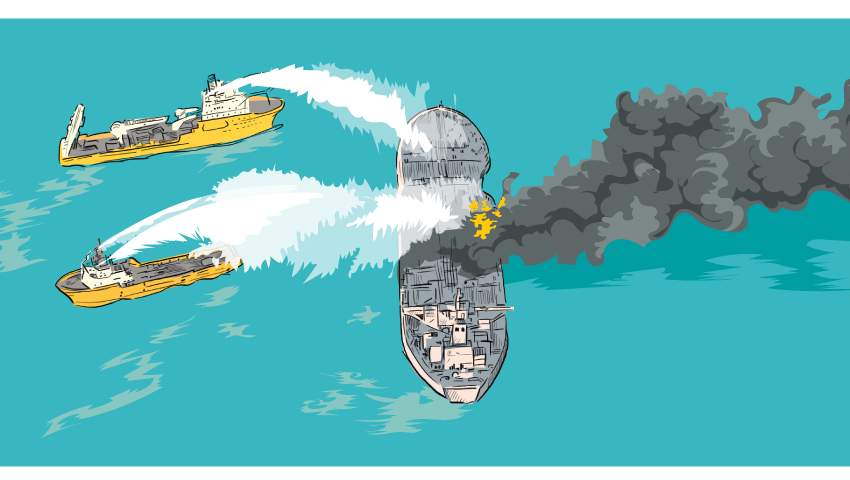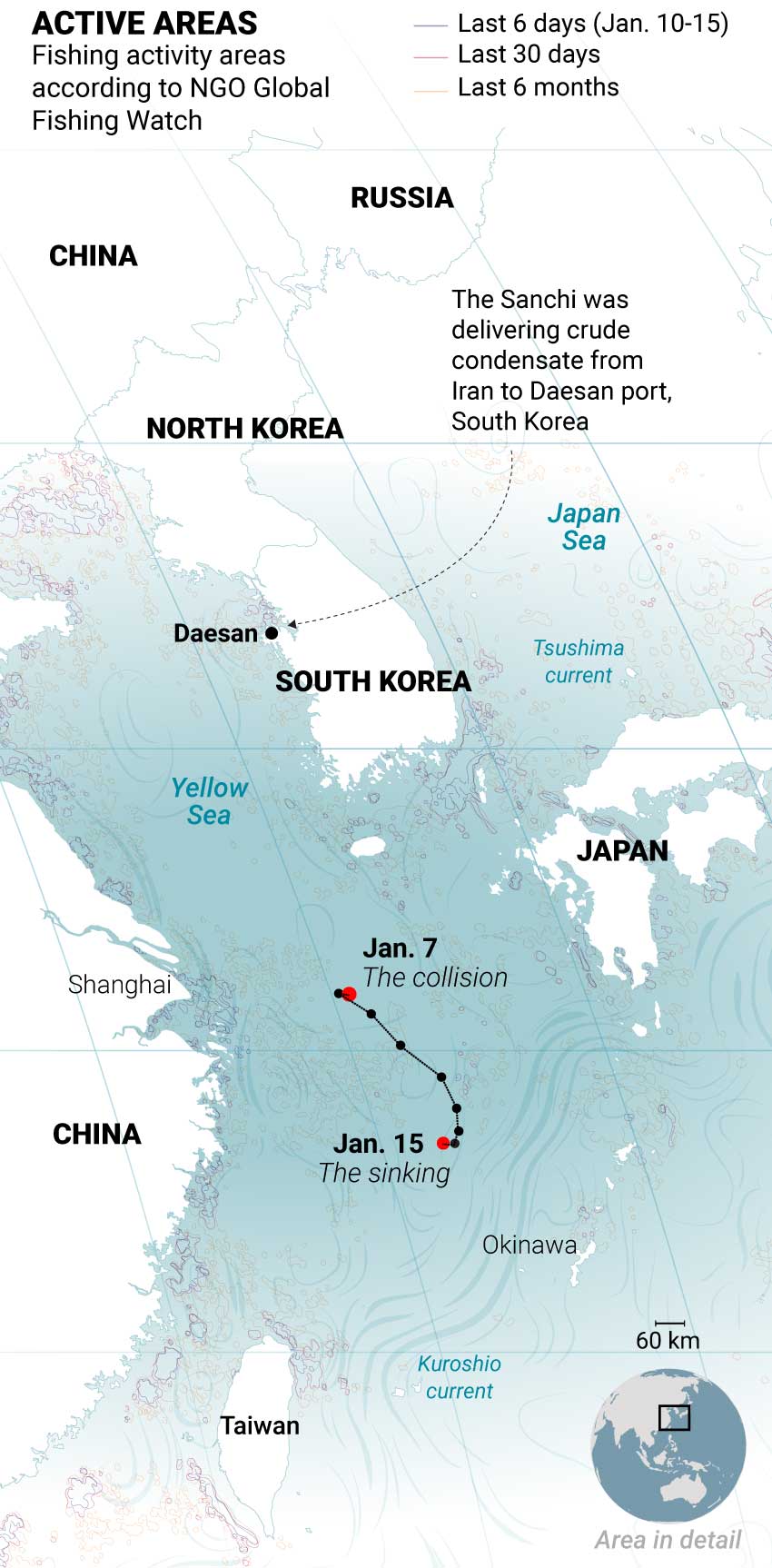An invisible threat
How the Sanchi oil tanker environmental disaster unfolded

Graphics
Team
On January 6, the oil tank Sanchi and cargo ship CF Crystal collided 160 nautical miles off the Shanghai coast. The Sanchi was carrying a highly flammable fuel oil, equivalent to one million barrels of oil


